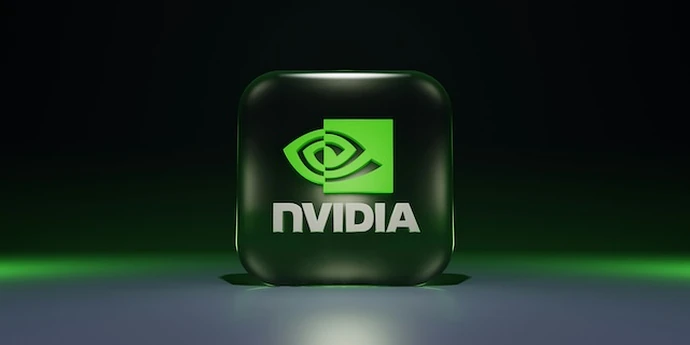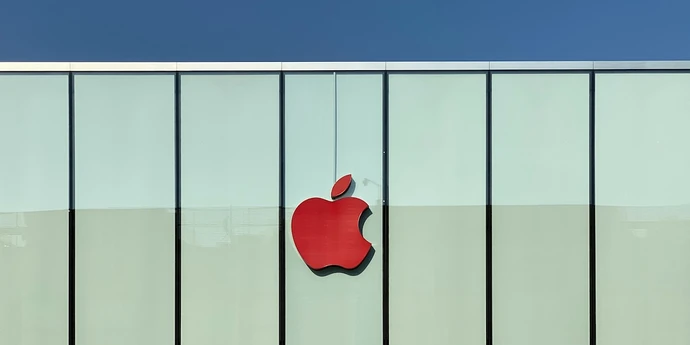Negotiating an Amazon job offer can feel uncomfortable and stressful. But going through this short-term pain is worth it. As an example, getting a $50K increase is common at the L5 level when negotiating well.
We’ve put this step-by-step guide together to help you negotiate a better offer by yourself. Here are the steps you should take:
- Understand how Amazon’s compensation works
- Find weaknesses in the initial offer
- Send a counteroffer email to your recruiter
- Handle their objections
If you know a recruiter in the tech industry, we highly recommend getting their help to negotiate your offer in addition to reading this guide. After all, this is part of their day-to-day job, and they’re professionals at it.
If you don’t know anyone and would still like to make sure you’re negotiating the best possible offer, then make sure to check out our salary negotiation coaches; some of them used to work at Amazon. They negotiate daily as recruiters and hiring managers and are therefore extremely comfortable with the process.
Click here to browse our team of salary negotiation coaches
1. Understand how Amazon’s compensation works ↑
The different components of your Amazon offer are not all equally negotiable. You will typically get most of your increase from RSUs (Restricted Stock Units), followed by your sign-on bonus, and then your base salary.
According to Malay, a former Amazon recruiter, “Amazon structures its offers heavily around Total Compensation Target (TCT) rather than focusing solely on base salary. The TCT includes base salary, RSUs (restricted stock units), sign-on bonuses (what Amazon now calls “payouts”), and sometimes equity refreshers.”
This means that when Amazon negotiates with you, it’s in the context of this total compensation band for the role and level you’re in. For example, you might think you’re being offered a lower base salary than your peers in the industry and try to negotiate this, which is a mistake most junior employees often make. Instead, negotiate with your TCT in mind and include RSUs and sign-on bonuses/payouts, too.
Malay adds “Amazon has a base salary cap that’s lower than many competitors. For most roles in the U.S., the cap is $175,000 as of recent policies. However, they make up for this through RSUs and bonuses.”
Amazon has a tiered system with 12 levels, and each level has a salary range associated with it. For example, software engineer entry-level positions start at Level 4 with a total compensation of around $180K per year, while Distinguished SDEs (Level 10) can earn over $1 million annually (source: Levels.fyi)

Amazon bases the level of role you’re considered for on two factors: years of experience and interview performance. Years of experience are equated with the following levels:
- Level 4: 1-3 Years of Experience
- Level 5: 3-10 Years of Experience
- Level 6: 8-10+ Years of Experience
- Level 7: 10 + Years of Experience
At level 7 and up, Amazon prefers to promote from within and rarely hires external talent.
According to Amazon, its compensation package is designed to attract and retain top talent, with fair compensation as an underpinning philosophy. The package consists of three main components:
1. Base Salary: This is the fixed amount paid to employees on a regular basis, typically monthly. The base salary varies depending on the role, level, and experience of the employee.
2. Sign-on Bonus/Payout: Many new employees receive a sign-on bonus or payout, which is paid out in the first two years of employment. This bonus is added to the employee's paycheck, effectively increasing their salary during this period. For example, if an employee receives a $60,000 sign-on bonus, they will get an additional $5,000 per paycheck in the first year.
3. Restricted Stock Units (RSUs): RSUs are a form of equity compensation. Employees receive RSUs that vest over a four-year period. The vesting schedule typically includes payouts at the end of the first two years, followed by additional stock grants every six months for the remaining two years. This incentivizes employees to stay with the company longer.
Amazon's RSU vesting schedule follows a 5-15-40-40 structure:
- Year 1: 5% of the initial grant vests at the end of the first year.
- Year 2: 15% of the grant vests at the end of the second year.
- Year 3: 40% of the grant vests at the end of the third year.
- Year 4: Another 40% vests at the end of the fourth year.
Can you negotiate your Amazon salary?
Yes. Amazon salaries are negotiable, but within Amazon’s salary bands within the TCT for your role and level.
Among the FAANG companies, Amazon is unique in that they have these firm salary caps. For example, recruiters cannot offer a base salary sum that’s beyond the maximum amount set for a given role and location.
Base salaries vary by job function and rarely exceed $175K, except for candidates in New York City and San Francisco, where L5 role levels and in-demand technical roles have a cap of $350K. In contrast, Google and Meta have Finance teams who may grant offers beyond the recommended salary band on a case by case basis.
Still, your Amazon recruiter expects you to negotiate, and their initial offer won't be the maximum offer they can give you to join the company.
“The first offer is never the best offer. Most companies expect you to negotiate and even leave room in the budget anticipating that.” (Alex, expert salary negotiation coach.)
If you've received a PM job offer from Amazon, check out our product manager salary negotiation guide to learn more.
1.1 Amazon RSUs (Negotiable)
1.1.1 How negotiable are RSUs?
For many technology-related roles and senior-level positions at Amazon, RSUs are indeed often a standard part of the compensation package. They're a big draw for attracting and retaining talent, especially in a competitive tech market. However, for entry-level or non-technical positions, they might be less common or offered at lesser amounts.
RSUs' negotiability varies. For highly sought-after roles, or if you have a strong negotiating position (several competing offers, extensive experience, in-demand skills), you might have some leverage to increase the number of RSUs offered or adjust the vesting schedule to a more favorable timeline.
Since Amazon RSUs vest unevenly across four years, Malay says this impacts negotiation, “This structure means that the majority of equity compensation is earned in years 3 and 4, which can affect long-term retention. You can negotiate for a higher initial grant of RSUs to offset the delayed vesting.”
1.1.2 How do Amazon RSUs work?
RSUs are company shares granted to employees, which vest over time. RSUs align employees' interests with the company's success, providing a stake in Amazon's growth.
Unlike stock options, employees don't need to purchase RSUs; they automatically convert to shares once vested.
Most Amazon employees are eligible for RSUs, except those working fewer than 30 hours per week or at certain job levels.
The number of RSUs granted depends on your role and target compensation level. You'll receive an RSU Award Summary upon joining, detailing your grant.
Your $ grant will be converted to an actual number of restricted stock units (RSUs) before your employment starts. That conversion will use the trailing average closing stock price of the 30 days before your start date.
So, if your grant is worth $100K and Amazon’s stock average close price was $100 in the 30 days before your start date, you’ll be given 1,000 RSUs, which will vest over 4 years.
1.1.3 Valuing your RSUs
There’s a lot more uncertainty around RSUs than there is around any of the other components of your compensation. Here are the two biggest factors to think about as you value your RSUs:
- Stock price fluctuations. Amazon’s stock could go up or down, and the value of the RSUs you’re getting is bound to change. This will have a huge impact on your actual financial outcome, but unfortunately, it isn’t something you can control or predict with certainty. Malay adds, “Since RSUs are tied to Amazon’s stock price, the actual value of your equity will vary depending on the stock’s performance. This is worth considering when evaluating your total compensation.”
- Likelihood of vesting. Although this probably isn’t on your mind right now, you might decide to leave because you don’t get along with your manager or team. Or you might be fired as part of a reorg. If this happens within 4 years, then you won’t take full advantage of your grant.
It’s important that you take these aspects into account when assessing and negotiating your offer. Unless you’re 100% comfortable with the risks described above, we recommend that you negotiate higher RSUs but also a higher base and sign-on, which are more certain financial benefits.
1.2. Amazon sign-on bonus/payout (Very Negotiable)
1.2.1 How negotiable is Amazon’s sign-on bonus/payout?
Amazon offers sign-on bonuses/payouts to attract and retain talent, especially during peak seasons or in areas with labor shortages. The payouts help to make the positions more competitive and appealing to potential hires.
For most technical roles and even many non-technical roles at Amazon, it is possible to negotiate a higher signing bonus. You can employ these two most useful pieces of leverage: competing offers and retention bonuses at your current company.
Malay shares that Amazon frequently offers large sign-on bonuses to offset the lower base salary and front-load compensation in the first two years. Sign-on bonuses are typically split into Year 1 and Year 2 payouts and reduced after that.
So, Malay says, “Sign-on bonuses are highly negotiable and can sometimes be increased based on competing offers or if you bring specific expertise.”
Even so, Amazon's signing bonuses aren't as significant as other peers in the industry (e.g., Google). For example, for L5 software engineers in the San Francisco Bay Area, the average Amazon sign-on bonus as reported in Levels.fyi is around $17K, compared to Google’s $32K.
The sign-on bonus is a one-time incentive that Amazon gives candidates to join. There are two main ways to think about your sign-on:
- Most people think about it as a lump sum that helps cover any bonuses (e.g., performance bonus) or unvested equity you’re walking away from at your current company.
- But if you’re not walking away from anything, it can also be interesting to look at it as a bridge between your start date and your first RSU vesting date.
1.2.2 How does Amazon’s sign-on bonus work?
Amazon offers sign-on bonuses to new hires and returning employees. The eligibility criteria can vary depending on the position and location.
Sign-on bonuses are generally *more* negotiable than RSUs. Experienced candidates, those with multiple offers, and individuals with high-demand skills typically have better negotiating power. The success of your negotiation often depends on how strongly Amazon wants you.
Sign-on bonuses at Amazon are typically paid out in installments rather than a lump sum. This means that the bonus amount is divided and added to the employee's paycheck over a specified period, usually the first two years of employment. For example, if an employee receives a $30,000 sign-on bonus, they might get an additional $1,250 per paycheck over the first year.
In some cases, employees may need to repay the sign-on bonus if they leave the company before a certain period, typically within the first year or two of employment. This ensures that employees stay with the company for a minimum duration.
1.3. Amazon base salary (Moderately Negotiable)
1.3.1 How negotiable is Amazon’s base salary?
While base salary is somewhat negotiable, Amazon tends to stick to their salary bands.
Malay shares, “While base salary caps may limit increases, there’s room to negotiate within your level’s band, especially for sign-on bonuses and RSUs. If you're at the top of a level’s band, you may want to discuss the promotion trajectory during negotiations.”
It’s common for Amazon recruiters to put you at the bottom or middle of the base salary band in their initial offer. Base salary bands are a lot narrower than RSU bands. You’ll be able to achieve a base increase by negotiating, but it won’t be as big as your RSU increase.
For L5 software engineers in the San Francisco Bay Area, the average Amazon base salary is around $190K. If you’re negotiating for this role and level in this area, it helps to remember this average ballpark figure for your salary target.
1.3.2 How does Amazon’s base salary work?
Amazon’s base salary follows the typical FAANG model. Each role, level, and location has a base salary band. The band is narrower at junior levels than at more senior levels, where there's more room for negotiation.
Your base salary is paid biweekly in the US and monthly in most other countries.
1.4. Amazon performance bonus (Not included)
1.4.1 How negotiable is Amazon’s performance bonus?
Performance bonuses are set at the company level for each role and level and therefore are not negotiable.
Malay says, “Amazon does not typically offer performance bonuses as part of its compensation package. Instead, it focuses on RSUs and sign-on bonuses. This is different from some companies that include annual performance bonuses in their total compensation.”
1.4.2 How does Amazon’s performance bonus work?
Amazon offers performance bonuses to its employees, depending on their roles and performance metrics such as productivity, safety, attendance, and other performance goals.
Full-time employees who exceed expectations typically receive an additional 4% to 6% of their monthly base salaries and are paid out monthly, although some departments may pay them quarterly or annually.
1.5 Amazon’s equity refreshers (Not negotiable)
Amazon may offer equity refreshers to employees who have been working at the company for at least one full year. They do this as an incentive for them to stay.
Malay says, “After your initial grant vests, Amazon may offer equity refreshers based on your performance and contributions. These are not guaranteed and are tied to internal performance reviews. While equity refreshers aren’t part of the initial offer, understanding how they work can help you evaluate the long-term value of your compensation.”
Equity refreshers are additional grants of stock given to employees periodically, usually during annual performance reviews. These refreshers help maintain competitive compensation and incentivize employees to stay with the company long-term.
Unlike other FAANG companies, though, Amazon incorporates its refreshers into its total compensation target (TCT) model. This system takes into account current grants when determining how many grants you’ll receive in the future in order to make sure it doesn’t exceed the promised amount.
You should ask about equity refreshers during your negotiations, but the vast majority of recruiters will shy away from sharing any details, which makes it a component that’s not negotiable in practice.
1.6 Amazon’s benefits and perks (Not negotiable)
Amazon offers a comprehensive benefits package to its employees. Here are some of the standard benefits included in an Amazon job offer:
- Health Benefits - medical, dental, and vision insurance; health savings accounts; employee assistance program for mental health and financial counseling
- Financial Benefits - 401(k) savings plan; life and disability insurance
- Paid Parental Leave - up to 20 weeks for birthing mothers and six weeks for adoptive parents; Leave Share program which allows employees to share their parental leaves with a spouse or partner
- Work-Life Balance - Paid Time Off (PTO) for personal time, vacation, and holidays
- Career Development - Career Choice Program where Amazon pre-pays 95% of tuition and fees for courses in high-demand fields, regardless of whether the skills are relevant to an employee's current role; Upskilling 2025 where Amazon has committed $1.2 billion to provide education and skills training programs for employees.
- Family Support - child and eldercare referrals; adoption assistance
- Additional Perks - employee discounts and commuter services
Amazon’s benefits and perks aren’t negotiable.
How much additional compensation can you negotiate at Amazon?
You can negotiate anywhere between $5k and $100k+ depending on your seniority, your skill set, and the initial offer that was made. Higher-level roles have more range for salary negotiation than lower-level ones.
Malay recommends these key points for negotiating Amazon offers:
1. Understand the Components: Focus on negotiating the sign-on bonus and RSU grant since these are the most flexible elements.
2. Leverage Competing Offers: Amazon responds well to strong competing offers, so have other offers in hand to strengthen your position.
3. Stock Volatility: Since Amazon RSUs are stock-based, negotiate for a higher grant or sign-on bonus to mitigate stock price fluctuations.
4. Request Level Clarifications: Ensure the role and level (L5, L6, etc.) align with your experience to avoid being under-leveled.
2. Find weaknesses in the initial offer ↑
Now that you understand Amazon’s compensation components, your next step should be to find weaknesses in the initial offer you receive. You’ll then use these weaknesses as arguments for your counteroffer in Step 3.
There are two main ways to find weaknesses.
- First, you should research ranges for your role for the different compensation components we discussed using public data sources to find the areas where your offer is at the lower or middle of the range.
- Second, you should ask questions to your Amazon recruiter that highlight shortcomings in the offer, which you can use as arguments for asking for more.
2.1 Research ranges for the different compensation components
For the main compensation components (GSUs, sign-on bonus, and base salary), you should identify ranges for your role, level, and location. This is similar to the work we’ve done for the Amazon L5 Software Engineer in the SF Bay Area covered in the previous section.
You should use multiple sources when establishing these ranges. A few we recommend include Glassdoor, Levels.fyi, Comparably, and Salary.com.
As you do your research, remember that there’s a time lag between the moment offers are reported on these websites and the time at which they were actually made. In practice, this means that the ranges you will find will be lower than what’s currently being used by Amazon.
After doing this work, you should have a sense of how much you can ask for for each compensation component. It’s important to stay realistic as you do this exercise.
Here are two sanity checks we recommend making before settling on specific numbers you’re going to ask for.
First, it’s unlikely that you’ll manage to get to the very top end of the range for all components. Broadly speaking, there are two extremes.
If your aim is to maximize total compensation and you’re comfortable with the risks associated, then you could focus on maximizing your GSUs.
If you’re interested in more certainty, then you could focus more on base salary and the sign-on bonus, but you’re less likely to reach the top end of total compensation.
Second, you should try to be realistic about the skill set you bring to Amazon. For instance, at the time of writing, Amazon is struggling to find software engineers with expertise in artificial intelligence and machine learning. As a consequence, these are the skillsets that typically achieve the highest total compensation for a given software engineering level.
2.2 Ask questions to your recruiter to highlight weaknesses in the offer
Another way you can uncover strong negotiation arguments is by asking questions to your recruiter. The objective of this fact-finding exercise is to highlight differences between Amazon’s compensation and other companies (including your current employer).
Here are five example questions you could ask your recruiter. You should adjust this list based on the strengths of the compensation package of your current employer and other companies you are in the process with.
Sign-on bonus
- Question: I noticed that there was no sign-on bonus in the initial offer you sent. My understanding was that Amazon routinely offered signed-on bonuses to new hires, as do other FAANG and tech companies. Could you confirm if that’s something that’s available for this position?
- Goal: Amazon recruiters often leave sign-on bonuses out of their initial offer. This question is a simple way to point out the omission.
Discounted stock-purchase program
- Question: Does Amazon provide a discounted stock-purchase program? When would I be eligible to participate in the program?
- Goal: At the time of writing, Amazon does not provide that benefit, whereas other FAANG and top companies do. You’re highlighting that weakness.
Remote work policy
- Question: Can you clarify what Amazon’s remote work policy is?
- Goal: At the time of writing, Amazon’s employees have to already be at the office 5 days a week, which is less flexible than your current company or other companies you’re in the process with.
Time off
- Question: What’s Amazon’s vacation policy?
- Goal: At the time of writing, Amazon’s paid time off for new hires is 15 days per year (for US offices), which might be lower than your current company or other companies you’re in the process with.
Can you lose your Amazon job offer by negotiating?
No, as long as you negotiate politely and respectfully, you won't lose your Amazon job offer. Amazon has invested significantly in interviewing you. Once they make you an offer to join, the tables turn, and the recruiter's job is to convince you to accept the offer.
If you do your research well and are thoughtful about what you ask for, the worst that can happen is that your recruiter doesn't budge and says that the initial offer they made you is a final offer that's non-negotiable.
3. Send a counteroffer email to your recruiter ↑
3.1 Consider setting a "walk-away" number
How will you know if you’ve negotiated successfully?
Before starting a negotiation, it can be helpful to write down your "walk-away" number. Your “walk-away” number is the minimum number or set of conditions you’re willing to accept.
If you manage to negotiate an offer that’s above that number, you’ll accept it. If you don’t, then you’ll walk away and stay at your current company, or continue interviewing.
That number or set of conditions are subjective and results from a lot of different factors, including: the research you’ve done in step 2, your other options, other personal circumstances, etc.
Having this number in mind during the negotiation will enable you to keep a cool head and to know when to accept the offer or move on.
There are many ways to make a counteroffer. Here are two common ones we recommend considering:
- You could share your walk-away number with your recruiter and let them know that’s the minimum you’re willing to accept
- Or you could start the negotiation with a higher number than your walk-away and leave more room for negotiation
The main benefit of the first approach is its simplicity. It minimizes back-and-forth and also makes it clear to your recruiter how much the initial offer needs to be increased to bring you onboard.
The main downside of this approach is that you might not maximize your total compensation because your walk-away number might be lower than the maximum offer Amazon was willing to make you. You also obviously can’t use that approach if the initial offer you received is already higher than your walk away.
The main benefit of the second approach is that it has more upside than the first one. You’re more likely to maximize total compensation using that approach.
The main downside is it will involve more questions, pushback, and back-and-forth with your recruiter. In other words, it’s more work and discomfort to go through. Working with a seasoned job offer negotiator can help a lot if you pick that approach.
3.2 Write your counteroffer email
Once you’ve gathered all the data you need and decided on the approach you pick, it’s time to make your counteroffer.
We recommend sending an email containing your counter offer and suggesting a call to discuss your thoughts if the recruiter would find that helpful.
There are three reasons we think this approach works well.
First, an email puts you in complete control of what you’re communicating, so you can’t be derailed by questions the recruiter throws at you.
Second, your recruiter will be able to easily forward that email to their compensation team to review and bump your numbers.
Finally, your recruiter will most likely want to discuss your counteroffer over the phone, so you’re just anticipating their request by suggesting a call.
Here are email template examples you could use, depending on which negotiation approach you decide to take.
If you choose a non-negotiable counter-offer approach:
Non-negotiable counteroffer email template
Hi X,
Thanks again for making me an offer to join Amazon and for taking the time to answer my questions earlier.
As I mentioned, I’m really interested in joining your team, and I’m confident I’ve got the skill set required to quickly make a positive contribution.
I took the time to review your initial offer and carry out research to better understand typical compensation packages for my skill set, level, and location.
Based on that research, I feel the compensation for the skill set I bring to the table could be closer to the following numbers:
- Base salary: $xk
- Sign-on: $xk
- RSUs: $xk
In addition, I wanted to stress that moving to Amazon would mean making the following trade-offs for me:
- I’d be walking away from $xk in performance bonus and $yk in unvested equity.
- My current company also provides ABC benefits that I would lose by moving over.
I’m willing to make these trade-offs because I’m really excited about joining Amazon. But in parallel, I wanted to kindly request that you circle back with your team to close the gap with the numbers I’ve laid out above.
I recognize that I’m asking for a significant bump. But I feel like this request is reasonable based on my research and the other options I’m walking away from.
If it makes things easier for you, I’m more than happy to jump on the phone to talk about these different points with you.
Best regards
Y
If you choose a flexible counter-offer approach:
Flexible counteroffer email template
Hi X,
Thanks again for taking the time to interview me over the past few weeks and for making me an offer to join Amazon. I’m really excited about joining the company, and I’m confident I can make a positive impact.
I took the time to review compensation ranges for my role, level, and location. Based on that research, I would like to ask for the offer to be moved closer to the following numbers: Base salary: $xk; Sign-on: $xk and RSUs: $xk.
In addition, I wanted to stress that moving to Amazon would mean making the following trade-offs for me:
- I’d be walking away from $xk in performance bonus and $yk in unvested equity.
- My current company also provides ABC benefits that I would lose by moving over.
As I mentioned in my interviews, I’m really excited to join the company because [reason 1] and [reason 2] and I’m really hoping your compensation team will be able to match the offer suggested above.
If that makes things easier for you, I’m more than happy to jump on the phone to talk about these different points with you.
Best regards
Y
You can adapt these emails to your situation, but we recommend you follow a similar structure and hit the following key points:
- Reiterate how excited you are to join.
- Thank them for answering your questions.
- Lay out what you believe is fair compensation for your skill set.
- Clearly ask them to take this request to their compensation team.
- Offer time to discuss this with them if needed.
4. Deflect questions and handle objections ↑
If your skill set is in high demand, or if you’ve done extremely well in the interviews, then your Amazon recruiter might reply with an improved offer immediately. But in a lot of cases, they’ll actually object to your request without taking it to the compensation team.
Here’s a list of common objections and how to handle them. As you work through these objections, remember that your objective is for your recruiter to take your request to the compensation team, which is the one setting your numbers.
- “We don’t have flexibility.” Reiterate that you’re excited to join and that you recognise you’re asking for a significant bump but that you’d greatly appreciate it if their team could take a second look to try to close that gap.
- “Would you accept $x? " Reiterate that your ideal goal would be the one that you stated in your initial email. And that you’d greatly appreciate it if the compensation team could take a second look to try to close the gap between the initial offer and the numbers you shared.
- “Are you sure you’re that interested in Amazon?" Reiterate that you’re absolutely thrilled to join but that the last thing you want is to start working there and have doubts about being compensated at the market rate. You want to be able to focus 100% on the job and therefore ask that the compensation team take a second look at your numbers.
- “Are you sure about your data? ” Explain that your data is based on publicly available sources as well as conversations with other recruiters and people you know working in similar positions as you. And reiterate that you’d greatly appreciate it if they could take this back to their team to try to close the gap.
After handling these objections, your recruiter should agree to take things back to their team, and you’ll receive an updated offer within a few days.
Watch this video for the 10 rules of salary negotiation.
Salary negotiation resources ↑
We also recommend the resources below for your further salary negotiation preparation.
You can learn more from our job offer negotiation guides:
- Best salary negotiation services (2025)
- Meta job offer negotiation guide
- Google job offer negotiation guide
- Apple job offer negotiation guide
- Product manager salary negotiation guide
- 10 Rules of Salary Negotiation
Other salary negotiation resources:
- Ultimate Negotiation Guide (American Negotiation Institute)
- 15 Rules for Negotiating a Job Offer (Harvard Business Review)
- How to Negotiate Your Salary in the Age of Pay Transparency Laws (Harvard Business Review)
- O*net (Department of Labor-sponsored website that provides a comprehensive look at the skills required for specific jobs across all industries, plus median pay per job)
- H-1B Data (For foreign nationals working for U.S. employers)
- Payscale (Salary comparison website)
- Glassdoor (Salary comparison website)
Get support from a professional negotiator ↑
Our coaching team has run thousands of salary negotiations as recruiters and hiring managers. They negotiate daily and are therefore extremely comfortable with the process.
A negotiation done well should usually yield $10k+ to $100k+ in increase, depending on your role and level. So spending $150 to $500 on getting help from a coach has a huge ROI (at least 10x).
Here’s what our coaching can help you with:
- Finding the weaknesses in your initial offer
- Determining what a reasonable total compensation is for you
- Practicing mock negotiation over the phone
- Giving you advice in situations we haven’t covered above
Click here to browse our team of salary negotiation coaches.















